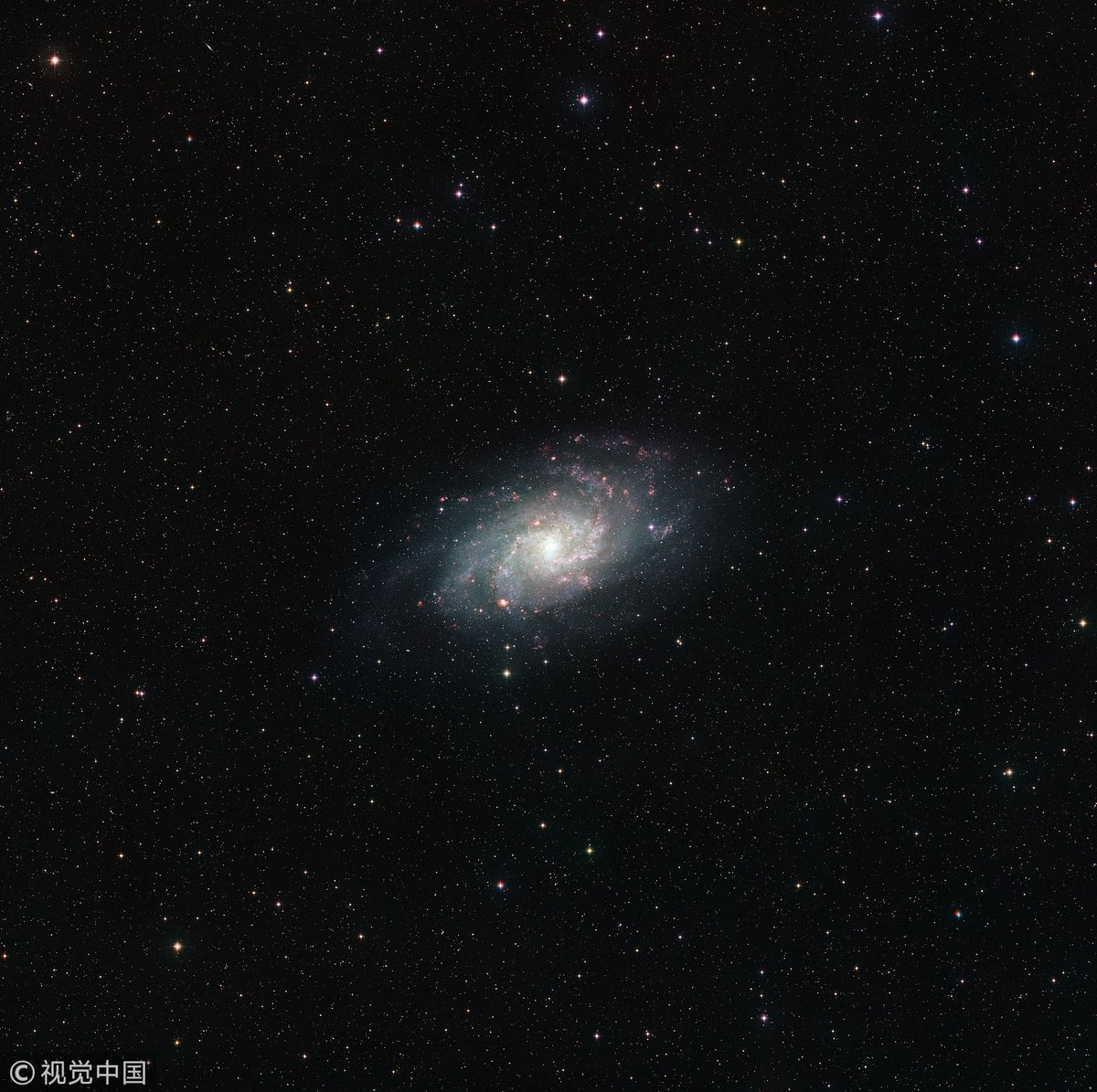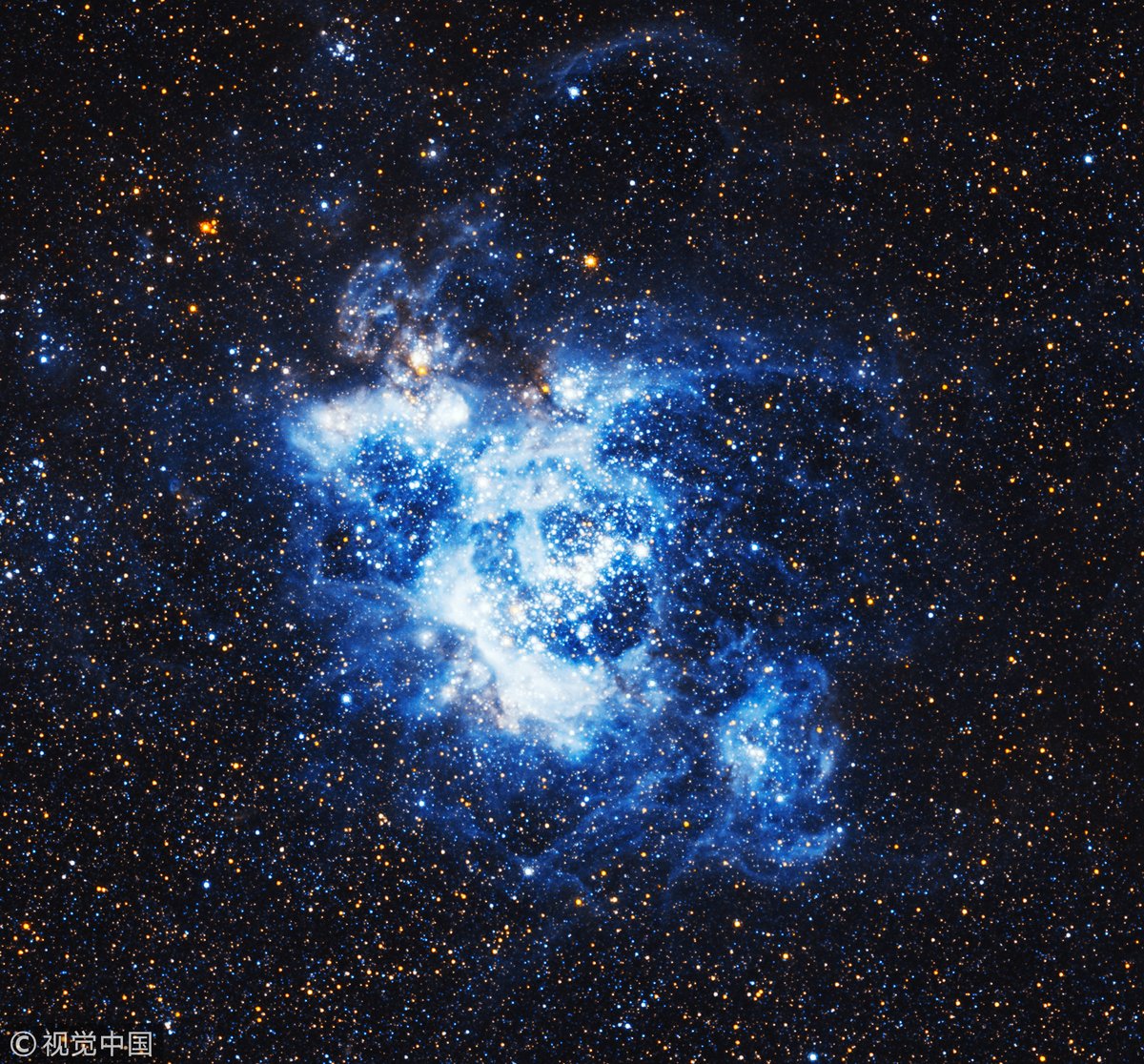An international scientific team led by Spanish researchers from the Center for Astrobiology (CAB, CSIC-INTA) in which the Instituto Astrofísica de Canarias (IAC) is involved, has identified the origin of structures formed in galaxies such as the Milky Way.
As reported Monday by the IAC (based in the Canary Islands), the researchers studied a representative sample of disk and globular (without disk) galaxies located in a region of deep sky located in the constellation Ursa Major to characterize the galaxies. Characteristics of stellar clusters of galactic lamps.
The results of this study were published in the Astrophysical Journal. IAC.
The researchers focused their study on massive, disc, and spherical galaxies. Using space data from the Hubble Space Telescope and spectroscopic data from the SHARDS project (Scan for red and dead high z absorption sources).
The latter is a program for observing the entire GOODS-N area (Great Origins Deep Survey – North) in 25 filters implemented with the OSIRIS instrument at Gran Telescopio Canarias (GTC), the world’s largest optical and infrared telescope located at the Roque de los Muchachos Observatory (Garafía, Canary Island in La Palma).
According to the IAC, analysis of the data revealed something unexpected: the disc galactic bulbs formed in two waves.
A third of the bulbs in the disk galaxies formed around a redshift of 6.2, which corresponds to an early era of the universe, when it was only 5% of its current age, about 900 million years.
These LEDs are “remnants of the first structures that formed in the universe, which we found hidden in nearby disk galaxies,” notes Luca Costantin, a CAB researcher through the Talent Attraction program for the Madrid Community and lead author of the study.
In addition, nearly two-thirds of the observed LEDs have an average redshift of about 1.3, indicating that their composition is more recent, roughly four billion years or roughly 35% of the age of the universe.
The statement explained that a distinctive feature that makes it possible to distinguish between the two waves is that the central lamps of the first and older waves are more compact and intense than those formed in the second, newer ones.
Data from the spherical galaxies in the sample show an average redshift of 1.1, which appears to indicate that they formed around the same time as the second wave bulbs.
For Jairo Méndez Abreu, a Spanish researcher at the University of Granada (UGR) and co-author of the article and former postdoctoral researcher Severo Ochoa at IAC, the idea behind the technique used to observe the stars of the central lamp is a perfectly good one. simple.
He added that, however, it was impossible to apply until methodologies were recently developed that made it possible to separate the light from the stars in the central lamp from those in the disk, specifically the GASP2D and C2D algorithms, which “we have recently developed and have enabled us to achieve unprecedented accuracy.” “.
Another important finding of this study is that the two waves of lamp formation are distinguished not only in terms of star ages, but also in terms of star formation rhythms.
The data indicates that stars in wave I follicles formed rapidly, on typical time scales of 200 million years.
In contrast, a large portion of the stars in second wave bulbs required formation five times longer, on the order of a billion years.
“We found that the universe has two ways of forming the central part of galaxies like ours: starting early and speeding up, or taking time to start and also finish forming a large number of stars in what is known as a bulge.” , comments. Pablo G. Pérez González, Researcher at CAB and Principal Investigator of the SHARDS Project.
In the words of Antonio Cabrera, Head of Scientific Operations at GTC, “SHARDS are a perfect example of what the combination of GTC’s massive assembly capacity and the exceptional conditions of the Roque de los Muchachos Observatory allows, by producing 180 hours of data with excellent image quality, essential for object discovery. which are analyzed here.
Paula Dimauro, a researcher at the National Observatory of Brazil and co-author of the work, notes that this study made it possible to explore the morphological evolution and history of the assembly of the structural components of galaxies, in the manner of archaeological studies, and to analyze the information encoded in millions of stars in each galaxy.
The interesting thing, he added, was the discovery that not all structures were created at the same time, or in the same way.
The results of the study allow to establish an “intriguing parallel” between the formation and evolution of the disk galaxies studied over time and the creation and development of a great city over the centuries.
Thus, just as some large cities have been observed to have an older historic center housing the oldest buildings in narrow and crowded streets, the results of this work indicate that some massive disk galactic centers do in fact host some of the oldest spheroids formed in the universe, which have acquired discs forming material new, new oceanic neighborhoods in our analogy, more slowly.

“Problem solver. Proud twitter specialist. Travel aficionado. Introvert. Coffee trailblazer. Professional zombie ninja. Extreme gamer.”





More Stories
With a surprise in the case: a strange cell phone from Nokia was introduced
PlayStation Stars: what it is, how it works and what it offers to its users | Sony | video games | tdex | revtli | the answers
t3n – Digital Pioneers | digital business magazine